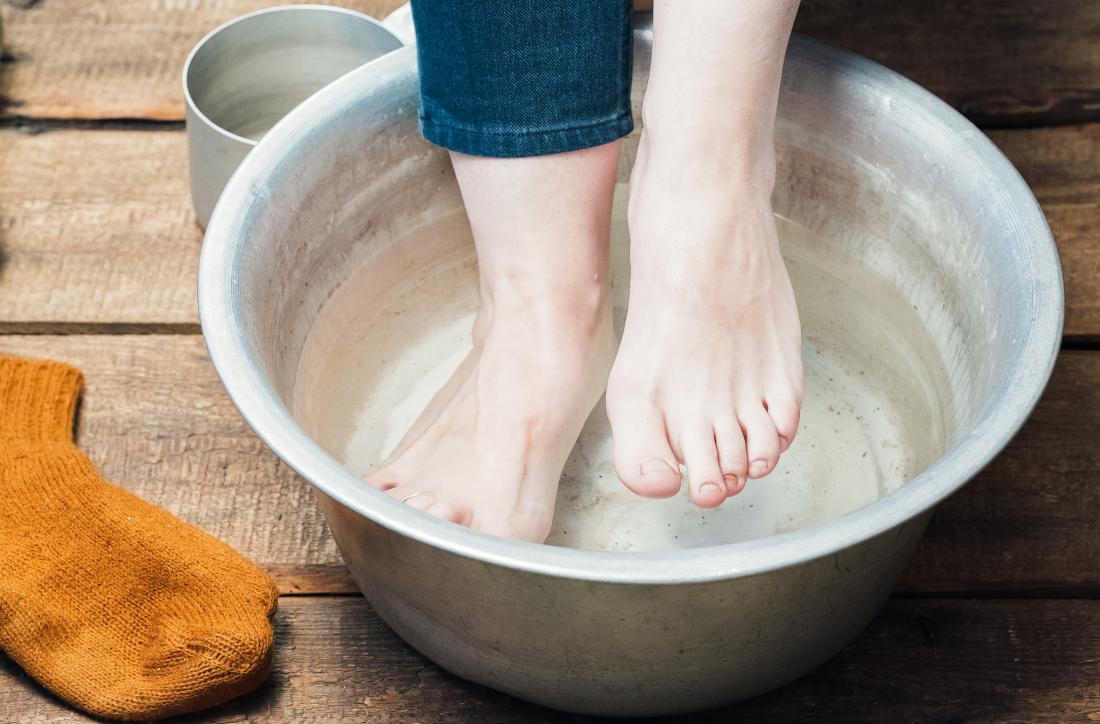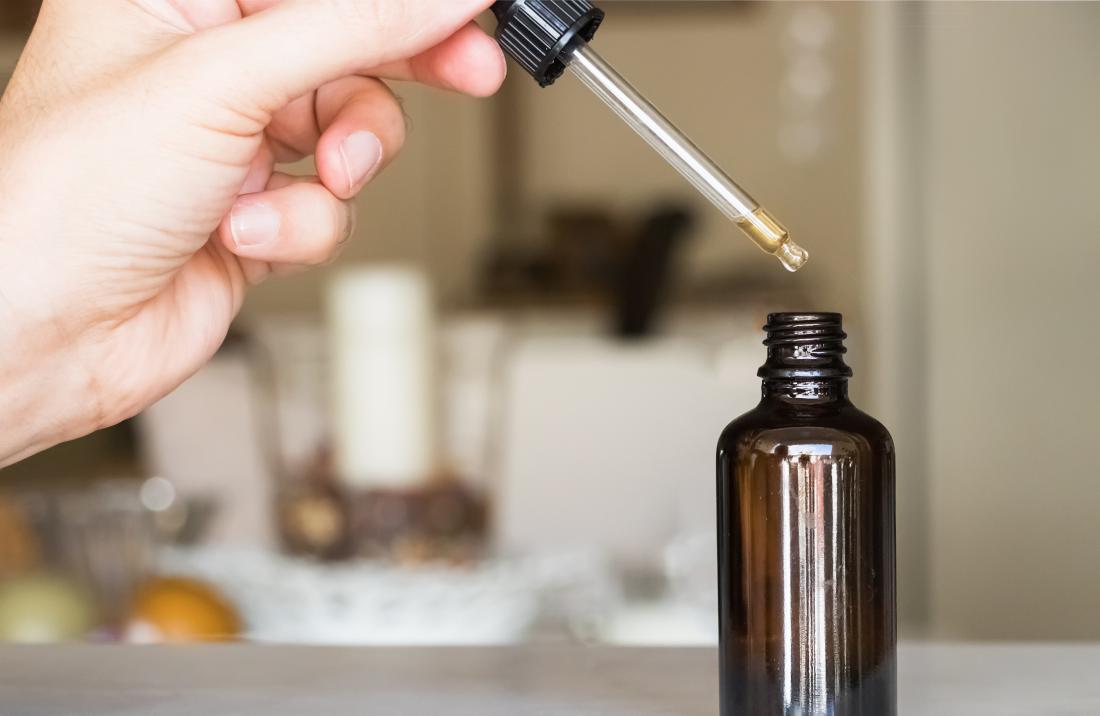👨 Shop Men's Health products from iHerb : https://fas.st/mPHRY1 Read more about Men's health in Ayurveda 👇 https://ayurveda-by-nelly.blogspot.com/2020/08/mens-health-in-ayurveda.html
Epsom salt is a natural compound that contains magnesium
sulfate and has a crystallized structure. People have used Epsom salt
for hundreds of years to treat a variety of ailments, including pain.
However, there is limited research supporting many of the medicinal
claims.
The theory suggests that soaking feet in an Epsom salt bath allows
the skin to absorb magnesium, which could help treat various foot
problems. Some small studies back the claims, but scientists need to
carry out more research to confirm how well Epsom salt foot soaks work.
This article looks at the benefits, risks, and explains how to use an
Epsom salt foot soak. It also discusses alternative foot soaks.
Benefits of Epsom foot soaks
Typically, people add Epsom salt to a bath or use an Epsom salt foot soak to ease muscle soreness.
A few small studies suggest soaking in an Epsom salt bath may allow magnesium to penetrate the skin. One study
found that magnesium penetrates the outer layer of the skin depending
on the concentration of the salt and how long a person soaks in it.
Some people believe soaking the feet can rid the body of toxins and heavy metals, though the evidence is mixed.
Absorbing magnesium through the skin from an Epsom salt foot soak may provide the following benefits:
Decreasing symptoms of athlete's foot
According to the Epsom Salt Council,
Epsom salt does not kill the fungus that causes athlete's foot.
However, it may help draw the moisture out, which makes the environment
less inviting for fungus.
Easing inflammation
While some advocates claim that an Epsom salt foot soak removes
toxins from the body, there is no strong evidence to confirm this.
However, the absorption of the magnesium through the skin may boost the
levels of the mineral in the body and decrease inflammation. Reducing inflammation may ease pain and stiffness associated with conditions, such as arthritis and gout.
Exfoliating the skin
The crystallized compound structure of Epsom salt provides
exfoliation of the dead skin on the feet. The foot soak may help
decrease roughness and leave the feet softer.
Reducing odor
Any type of foot soak might help reduce odor and clean the feet.
Keeping the feet clean and free from bacteria is beneficial for overall
foot health.
How to do it

A foot soak involves immersing the feet in warm water. According to the Arthritis Foundation, water temperatures between 92°F and 100°F are best to ease soreness.
To use Epsom salt in a foot soak, consider the following steps:
- Fill a basin or foot spa with enough warm water to cover the feet up to the ankles.
- Add half or three-quarters of a cup of Epsom salt to the water.
- Place the feet in the soak for about 20 to 30 minutes.
- Dry thoroughly after the soak and then moisturize the feet.
An Epsom salt foot soak can
dry out the feet, so it is best not to do it every night. Try soaking
the feet once or twice a week to make sure it does not cause dryness.
Precautions
Be sure to purchase Epsom salts and foot soaks intended for human
use. All Epsom salt contains magnesium sulfate, but manufacturers
produce a range of salts for different purposes. Chemically, all Epsom
salt is the same, but it is available in different grades.
Look for Epsom salt that has USP designated on the label. USP
indicates that scientists have tested the product for human use and that
it has met the safety regulations established by the United States Food
and Drug Administration (FDA).
Epsom salt suitable for foot soaks is available to buy at pharmacies, health food stores, and online.
For most people, an Epsom bath foot soak is safe. But there are a few
instances when it is best to talk to a healthcare provider before
using. For example, people that have very dry skin should avoid
overdoing foot soaks because the salt can dry out the skin leaving the
feet more prone to cracks.
Foot soaks of any type are not safe for people who have diabetes
due to the increased risk of infection. Regularly soaking the feet may
increase dryness, which can lead to cracking and raise the risk of
infection. Individuals that have open wounds or sores should also talk
with their doctor before using a foot soak.
A foot soak may not provide enough relief from certain foot problems.
Consider seeing a healthcare provider if any of the following symptoms
are present:
- prolonged tenderness after a foot injury
- foot pain that does not go away in a week
- swelling or redness of the foot
- open sores
Other foot soaks

In addition to Epsom salt, other types of foot soak that contain
different ingredients might help ease pain and improve foot health.
There is little research into their effectiveness, though some people
find them useful and most people can use them safely. Alternative foot
soaks include:
Baking soda
Adding baking soda to a foot soak can help exfoliate the skin, ease
itching, and cleanse the feet. Try adding 3–4 tablespoons of baking soda
added to a basin full of warm water.
Vinegar
Use 2 parts water and 1 part vinegar for a foot soak. The vinegar
helps kill bacteria and also reduces foot odor. It may also slow the
growth of fungus.
Olive oil
Add a few drops of olive oil to warm water for a hydrating foot soak.
The olive oil not only eases dryness, but it also contains antioxidants that may soften the skin.
Essential oils
Some people may find that various essential oils can help when added
to a foot soak, including peppermint, rosemary, and wintergreen.
Essential oils can reduce dryness, pain, and provide a cooling sensation
to ease achiness. A little goes a long way when it comes to essential
oils. Only add a few drops of the oil to a warm basin of water.
Summary
Although research is limited, it does indicate that the skin might
absorb magnesium. Possible benefits of an Epsom salt foot soak include
reduced itching, decreased inflammation, and reduced soreness.
The risks of using an Epsom salt foot soak are minimal. For most
people, it may be worth a try. But there are a few instances when it is
best to avoid using a foot soak, including when a person has diabetes or
has open sores on their feet.
Get Epsom salt from iHerb
Get Epsom salt from iHerb


Comments
Post a Comment